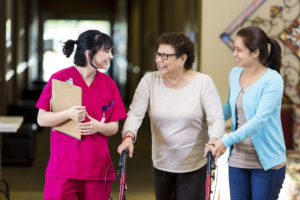Get your hospital patients active early
 Hospitalized patients generally spend much of their day in bed. Whether in the ICU or in other hospital units, immobility and its associated negative consequences increase length of stay and hospital-acquired harms, leading to worse patient outcomes. Once at home after hospitalization, patients are often physically more vulnerable, experiencing negative health consequences such as increased falls, which too often result in hospital re-admission.
Hospitalized patients generally spend much of their day in bed. Whether in the ICU or in other hospital units, immobility and its associated negative consequences increase length of stay and hospital-acquired harms, leading to worse patient outcomes. Once at home after hospitalization, patients are often physically more vulnerable, experiencing negative health consequences such as increased falls, which too often result in hospital re-admission.
Whether a patient is admitted to a medical or an adult or pediatric intensive care unit, studies have shown that getting patients out of bed and moving early in their care is beneficial in combating the harms caused by inactivity and immobility. And early mobilization is an excellent method to “bend the cost curve” by improving patient outcomes, reducing length of stay, and decreasing readmissions.
Implementing early activity and mobility protocols most often requires a structured hospital-wide approach. That begins with a culture change, which is embraced by your hospital’s administrative and clinical leadership and adopted and sustained by unit champions across all caregiving disciplines.
Learn more about the tools and support available to help you design and implement a structured activity and mobility quality improvement program at your hospital:
Click here to learn more about early mobility in the adult ICU; the PICU; medical units throughout the hospital.
